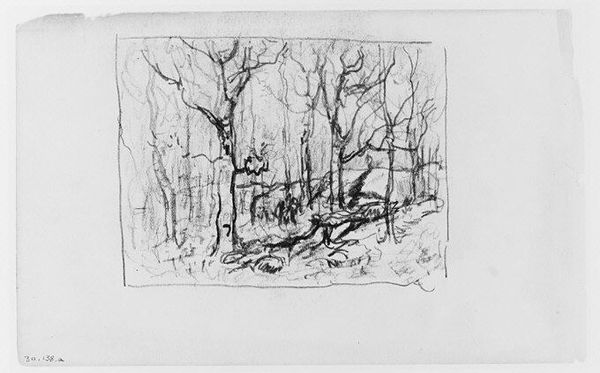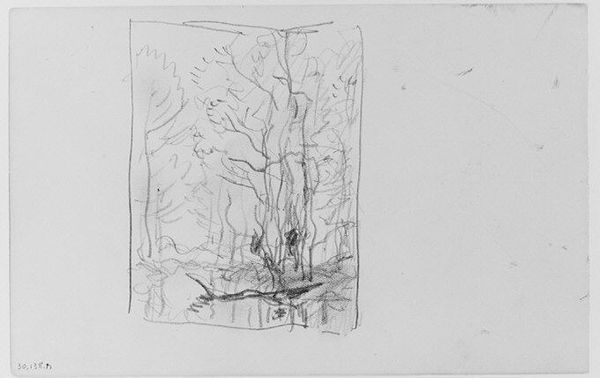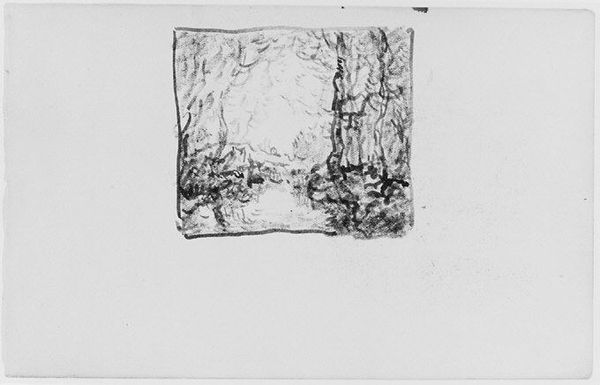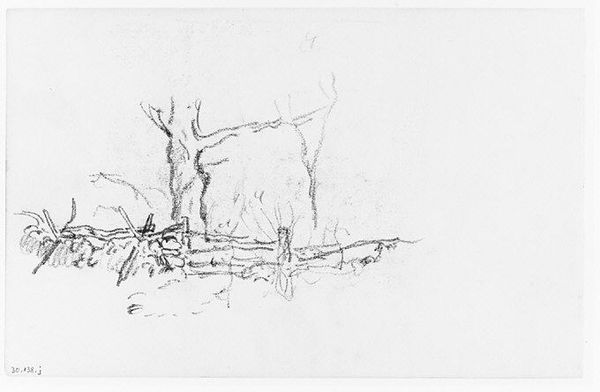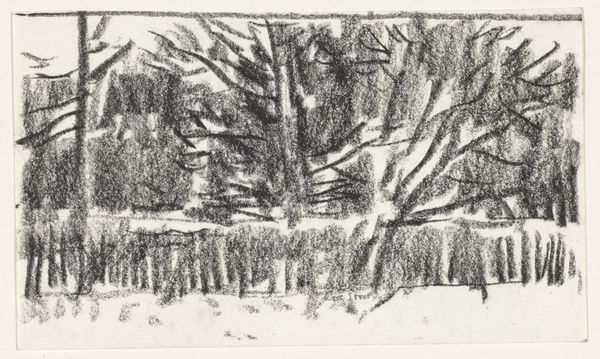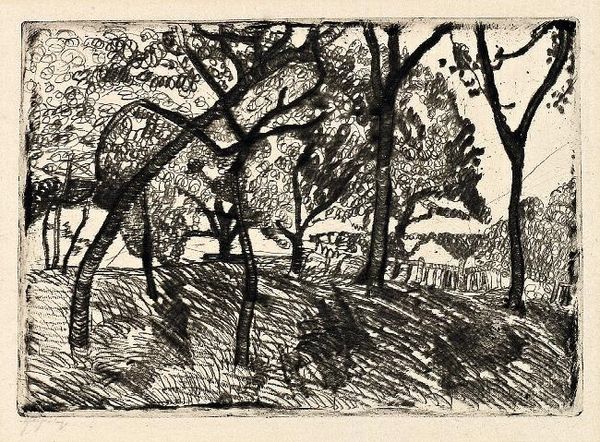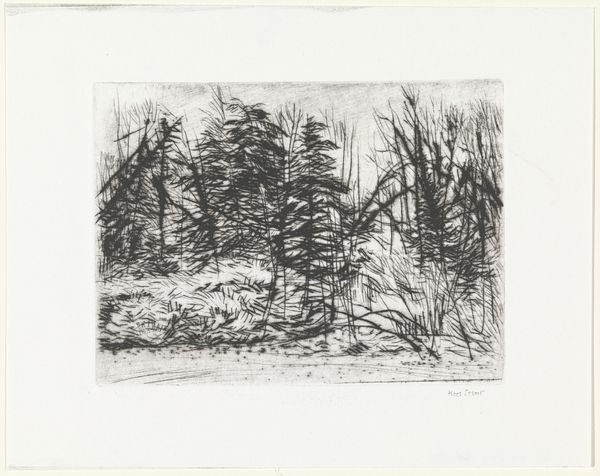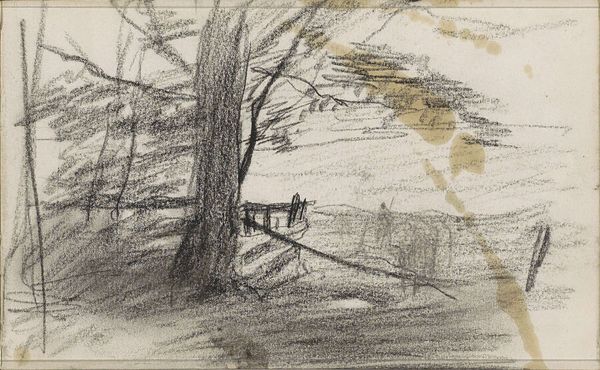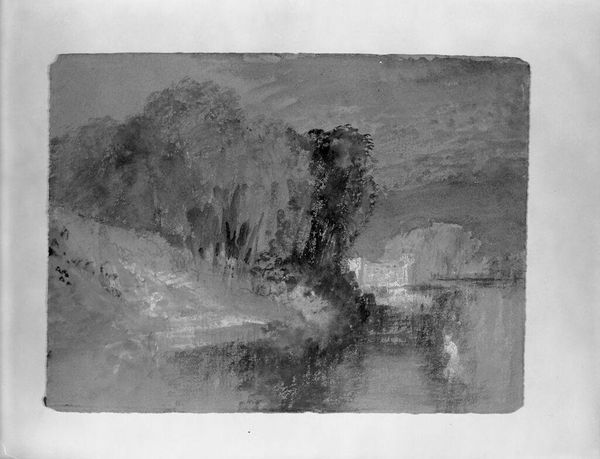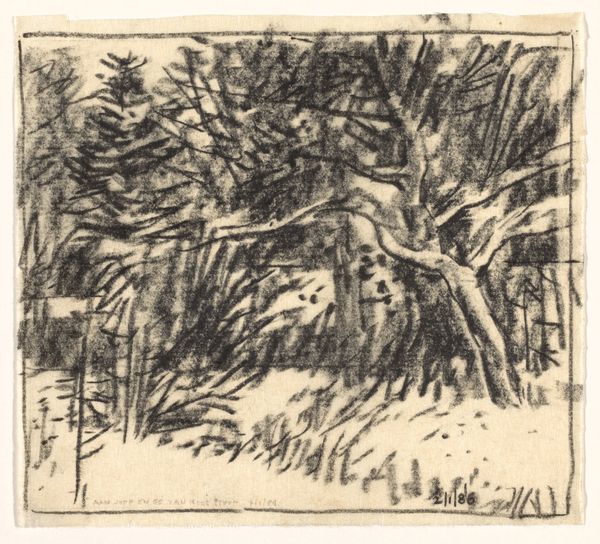
drawing, pencil, frottage
#
drawing
#
pencil sketch
#
landscape
#
sketch
#
pencil
#
sketchbook drawing
#
frottage
Dimensions: Sheet: 4 7/8 x 7 7/8 in. (12.4 x 20 cm)
Copyright: Public Domain
Curator: This drawing, housed here at the Met, is entitled "Two Trees on a Hill." It comes from a sketchbook by Henry Ward Ranger, and its creation dates are estimated between 1858 and 1916. Editor: It feels incomplete somehow, doesn't it? A fleeting moment captured with urgency. The lines are rough, but they give a great sense of the bare trees against what looks like a windy sky. It feels cold, too. Curator: Absolutely. This kind of sketch was crucial for Ranger’s practice. The medium is simple—just pencil and maybe some frottage. It allowed him to quickly document observed scenes which he'd later draw from. It suggests a deliberate return to the basics of landscape—an antidote perhaps to the rapidly industrializing world. Editor: Frottage, yes, that explains some of that ground texture. Look at the heavy shading suggesting dense material and rapid application. The choice of rendering that hillside—the land—almost obscures it. So tactile, this pencil work! I'm curious about the type of paper used; it doesn’t appear heavily processed. Curator: Ranger's sketches, while simple in form, reveal a wider discourse. Ranger had influence as a founder of the Old Lyme Art Colony; he pushed a distinct vision of American landscape painting towards tonalism. The rustic naturalism of "Two Trees" stands in pointed contrast to the lavish academic styles popular in established circles during that period. He very deliberately forged a uniquely 'American' artistic identity. Editor: That's fascinating to consider! And looking at the sketchbook context...seeing art birthed so intimately, rawly crafted and unprocessed, allows us access to the working conditions themselves; these scenes depict a relationship that's firmly situated on land undergoing significant change. You almost feel you are out there working alongside him! Curator: Precisely. He was investing art making in the real world, offering commentary through representation. The sketchbook format also democratized access; it countered exclusive exhibition settings and wealthy collectors of the day. Editor: Considering the rapid urbanization occurring then, one sees the artist's conscious dedication to the depiction of land, both as material sustenance and sustenance of another form. A timely reminder even now. Curator: Indeed. It invites questions about our relationship with the land then and now.
Comments
No comments
Be the first to comment and join the conversation on the ultimate creative platform.
